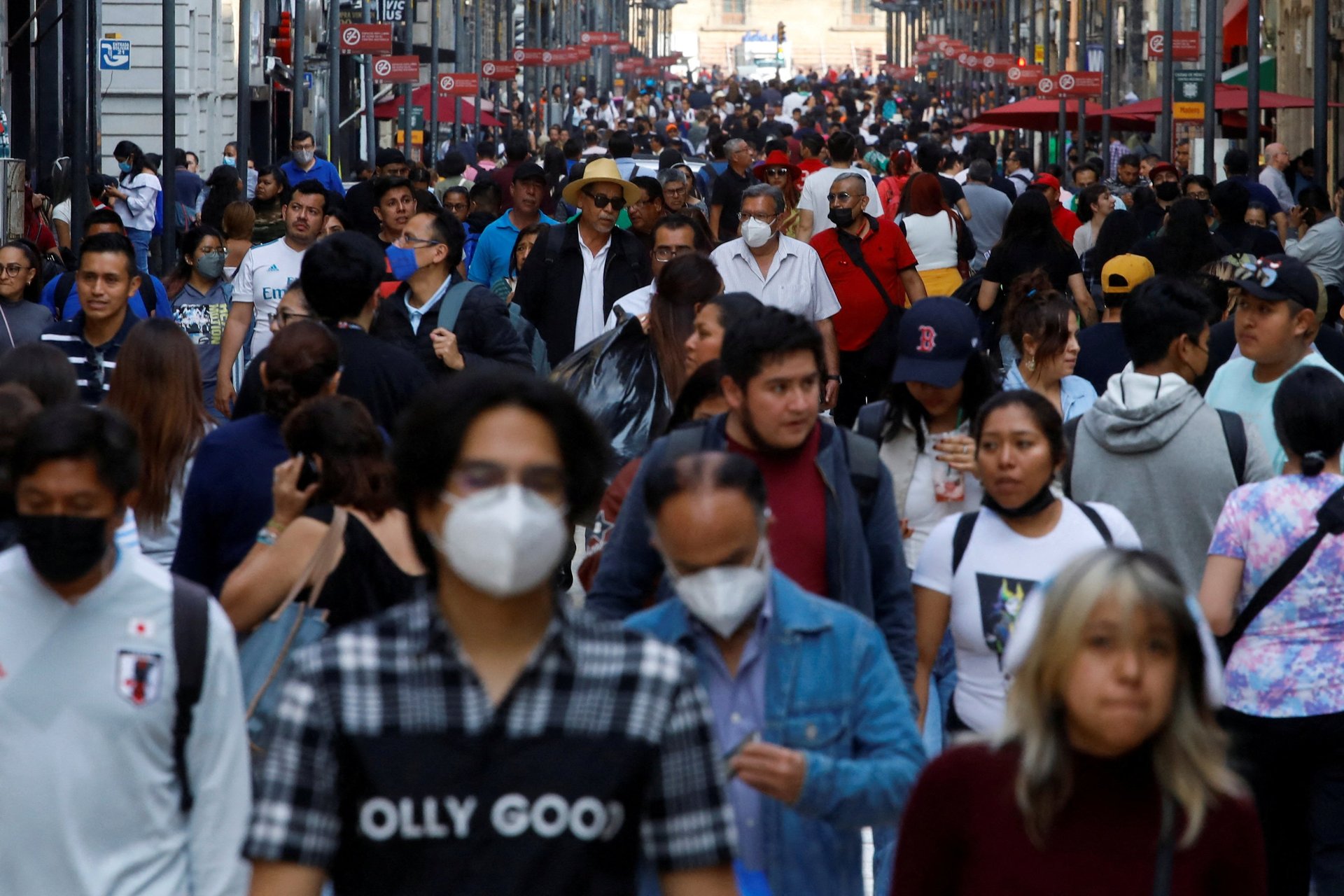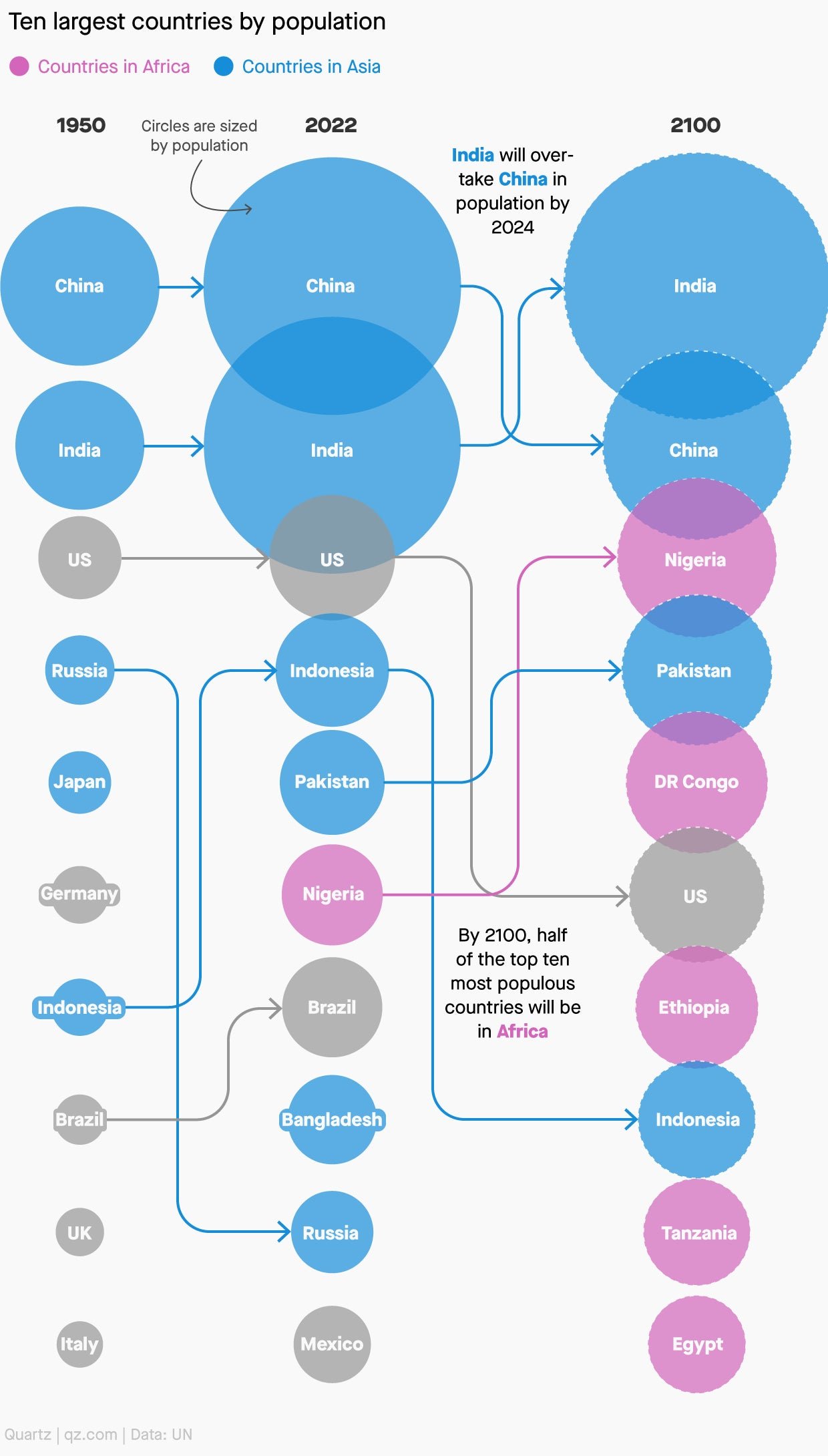The world’s population just hit 8 billion—and that's okay
The population peak is in sight: 10.4 billion or so, sometime in the next 60 years

“Happy 8th billion day!” Natalia Kanem, the head of the UN Population Fund, said in a media briefing on Tuesday. She’d long known the date—Nov. 15—to be special: According to the UN, it marked the day the world’s population crossed 8 billion, the last billion having been added since 2010.
Population pessimists may grumble at Kanem’s choice of the word “Happy.” She was speaking at the International Conference on Family Planning in Pattaya, in Thailand—and superficially, the persistent swelling of the world’s population might indicate a failure of family planning. Further, at a time of a shortage of everything—energy, semiconductors, baby food, housing—it’s tempting to think that any growth in population is a cause for high alarm.
But to go by that headline number would be to miss both the larger picture and the finer details. Growth is, in fact, slowing; this year, the world’s population went up by just 0.8%, whereas in the 1960s, it was rising at thrice that rate every year. At the present rate, we can even spot a peak to the world’s population: 10.4 billion or so, arriving some time between 2080 and 2100, before the number starts to decline.
Overall, the fertility rate—the number of children an average woman will have—is 2.3 now, down from 3.3 in 1990 and very close to 2.1, the so-called “replacement rate” at which the population will stabilize, neither growing nor shrinking. And as Kanem pointed out, the billions that the human race will gain this century are the result not of unsuccessful family planning but of better health policy. People live longer, and their children die less often in infancy—both outcomes that are inarguably welcome.
If there are reasons for concern, they lie in where populations are growing and declining, said Manoj Pradhan, who founded Talking Head Macroeconomics, a research firm in London. Pradhan, the co-author of a book called “The Great Demographic Reversal,” pointed out that the big demographic dividends—the surges in working-age populations—will come in countries that aren’t yet driving the world economy. The demographic drag, on the other hand, is unfolding in “the economic superstars, if you will,” Pradhan said. This differential, he said, will likely have huge effects for how our economies and societies function in the next hundred years.
Which countries are driving the world’s population growth?
By 2050, the world will hold around 9.8 billion humans. More than half of the 1.8 billion people added between now and then will live in just eight countries: the Democratic Republic of the Congo, Egypt, Ethiopia, India, Nigeria, Pakistan, the Philippines, and Tanzania.

Africa will, in fact, drive half of the world’s growth in population between 2022 and 2062. Fertility rates are still high in many African countries, averaging 4.5 children per woman, according to UN data. In Pattaya, Kanem explained how these nations are heading into the grip of a giant dilemma. As hot, low-income countries, they are first in line in suffering the fallout of dramatic climate events, even though they’re also among the least responsible for carbon emissions over the centuries. At the same time, they must grow their economies to make the most of their demographic dividend.
Rich countries will have to pay for the world’s demographic shift
Part of the solution to help low-income countries deal with the climate-population dilemma is the kind of financing outlined under the Paris Agreement. One analysis suggests that the US and other major carbon polluters should be presented with a bill of $4.3 trillion to help the global energy transition and climate adaptation efforts.
But these wealthy countries will also have to fund the changes in their own demographics. Working-age populations—taxable populations, in other words—will shrink, while the elderly will become more numerous. “You can see this everywhere,” Pradhan said. “Even in a relatively young economy like Brazil, you see that about 40 years ago, when public pensions were first defined, life expectancy was around 60, and now it’s 76 or so.”
Over the next three days, Quartz will explain three crucial economic impacts of the coming swings in population. The first: the persistence of inflation, and the grudging acceptance of it. The second: the translocation of manufacturing and labor. And the third: the inevitability of cross-border migration. Almost everything about the global economy in the decades to come will depend upon how wealthy countries manage their shift from youthful societies to ageing ones—and, in tandem, how poorer countries handle their swelling populations.
